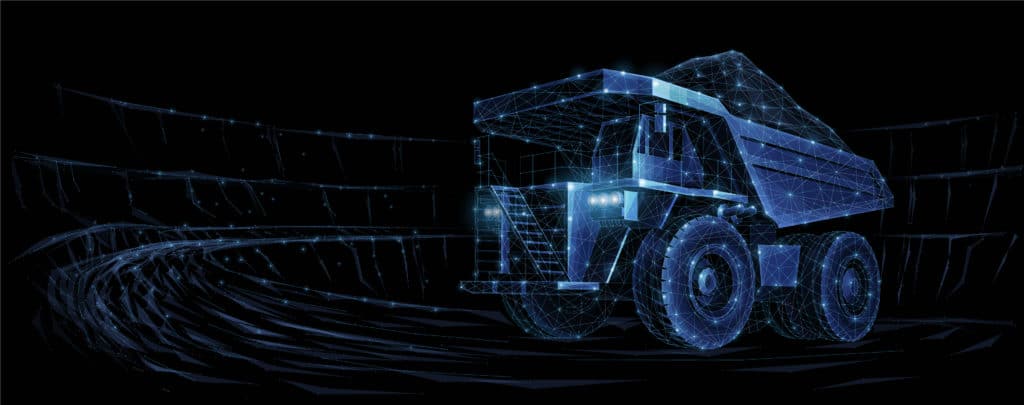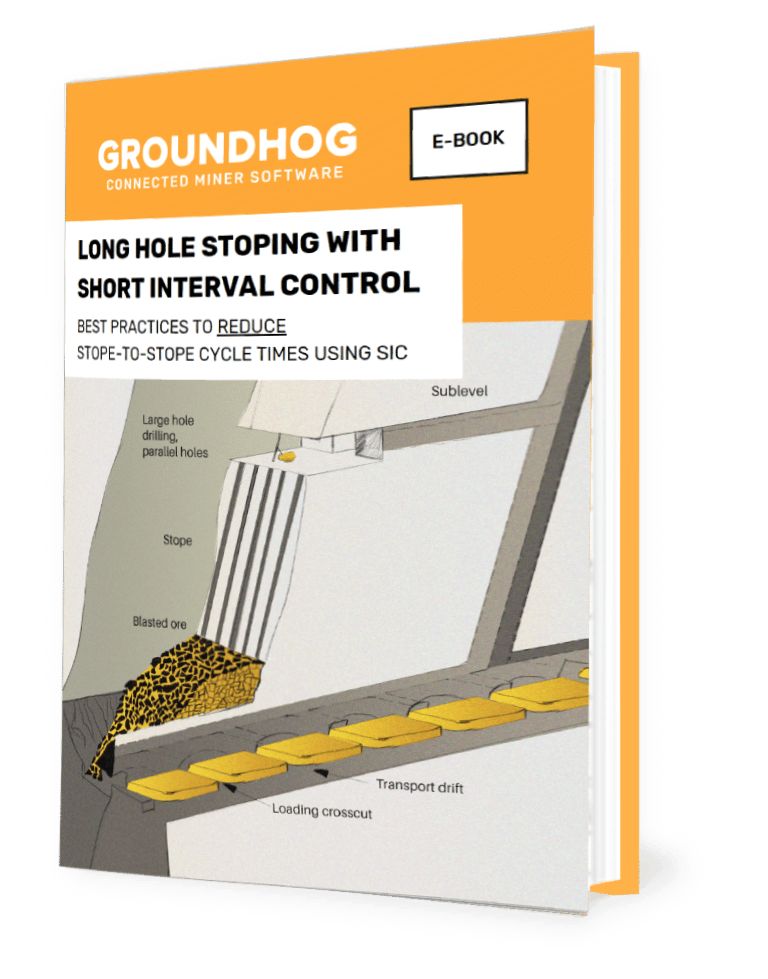In today’s rapidly evolving technological landscape, including Autonomous vehicles and ChatGPT types of Generative AI technologies, industries worldwide are harnessing the power of digitization and automation to revolutionize their operations. The mining industry is no exception. Mine digitization and automation have emerged as game-changing concepts, transforming how mines operate and and have unlocked myriad benefits. In this article, we will explore the significance of mine digitization and automation, the key technologies driving this transformation, successful case studies, future trends, impacts on the workforce, environmental considerations, and more.
The Benefits of Mine Digitization
Mine digitization offers a host of benefits that drive the industry’s inclination toward embracing these advanced technologies. First and foremost, it enhances safety and reduces risk. By automating high-risk tasks – for example inspecting and measuring stockpiles – and integrating sophisticated monitoring systems – ground control monitoring for example, mines can minimize human exposure to dangerous environments. Real-time data collection and analysis enable proactive safety measures, preventing accidents and ensuring the well-being of workers.

Furthermore, mine digitization significantly improves productivity and efficiency. Automation streamlines workflows, eliminates bottlenecks, and optimizes processes — all the way from the mine to the mill. With advanced analytics, mines today make data-driven decisions, identify inefficiencies, and implement targeted improvements. This leads to increased throughput, reduced downtime, and, ultimately, higher profitability.
Another advantage lies in the realm of data collection and analysis. Digitized mines utilize sensors and Internet of Things (IoT) devices to gather a wealth of information from various sources. This data is then processed using artificial intelligence (AI) and machine learning algorithms to extract valuable insights. These insights enable predictive maintenance, early fault detection, and optimized resource allocation, further enhancing operational efficiency.
Moreover, mine digitization contributes to cost savings and sustainability. By implementing automation, mines can reduce labor costs, energy consumption, and waste generation. Additionally, optimized resource utilization ensures minimal environmental impact and promotes sustainable mining practices.
Key Technologies Driving Mine Digitization
Several cutting-edge technologies play a pivotal role in driving mine digitization and automation. The Internet of Things (IoT) and sensors form the foundation of data collection. These interconnected devices, embedded in various mining equipment and infrastructure, monitor operational parameters, track asset performance, and enable real-time decision-making.
Artificial Intelligence (AI) and machine learning algorithms unlock the power of data analytics in the mining industry. By processing vast amounts of data, AI can identify patterns, predict failures, and optimize processes. Machine learning algorithms continuously improve their accuracy and effectiveness over time, making them indispensable tools for mine optimization. Machine learning algorithms are currently being used to analyze geophysical data, such as seismic surveys and electromagnetic measurements. These algorithms can identify patterns, anomalies, and relationships in large datasets, helping geologists interpret the subsurface structures and identify potential mineral deposits or hydrocarbon reservoirs. Machine learning algorithms are also being used to analyze remote sensing data, such as satellite imagery and LiDAR data, to create detailed geological maps. These algorithms automatically classify different geological features, such as rock types, fault lines, and geological structures, enabling efficient and accurate mapping over large areas.
Additionally, robotics and autonomous vehicles are transforming mine operations. Autonomous drilling and blasting systems increase precision, reduce the risk of human error, and enhance overall safety. We highly encourage you to see some of the automated Epiroc and Sandvik drill jumbos – they self-tram, setup and drill a face — all without any human intervention. Automated load-and-haul systems made by Komatsu and Caterpillar, and deployed at sites like BHP‘s South Flank optimize bulk ore movement, leading to greater efficiency and cost savings. Robotics also play a role in remote monitoring and control, allowing operators to manage mine operations from centralized control centers.
Implementing Mine Automation
While the potential benefits of mine automation are undeniable, implementing these technologies comes with its own set of challenges and considerations. Safety remains a primary concern, and careful planning is crucial to ensure the seamless integration of automated systems. Collaboration between technology providers such as what GroundHog does with mining companies, and regulatory bodies is essential to develop robust safety standards and protocols. Change Management is another big area that most mines tend to under-invest in although it is one of the key drivers for sustainable improvements in productivity and safety.
One of the key areas where mine automation has been successfully implemented is in autonomous drilling and blasting. These systems utilize advanced algorithms and sensors to precisely execute drilling and blasting operations. By removing the need for human intervention, mines can achieve greater precision, productivity, and safety in these critical tasks.
Automated haulage systems are another noteworthy aspect of mine automation. These systems utilize autonomous trucks and conveyors to transport ore and waste materials within the mine site. With optimized routes and real-time coordination, they minimize delays, reduce energy consumption, and increase overall operational efficiency.
Remote monitoring and control enable real-time oversight of mine operations from centralized control centers. Through the use of advanced communication networks, operators can remotely monitor equipment performance, manage processes, and make informed decisions. This remote approach enhances safety, improves operational efficiency, and allows for timely interventions when necessary.
Case Studies: Successful Mine Digitization and Automation Projects
To understand the real-world impact of mine digitization and automation, let’s look at a couple of successful case studies.
Example 1: BHP’s Autonomous Haulage
BHP has been at the forefront of adopting autonomous haulage systems to enhance its operations’ safety, efficiency, and sustainability. BHP operates numerous mining sites worldwide and has actively explored innovative technologies to improve its mining processes. Recognizing the potential of autonomous haulage, BHP initiated plans to implement this technology in its operations.
Implementation:
- Planning and Collaboration: BHP embarked on an extensive planning phase to ensure a successful implementation of autonomous haulage. From what we’ve gathered through different news reports, they’ve primarily worked with Komatsu. This involved collaboration with internal stakeholders, employees, contractors, and external technology partners. By engaging all parties early in the process, BHP aimed to address concerns, provide adequate training, and ensure a smooth transition.
- Pilot Projects and Trials: BHP initiated pilot projects and trials to test and refine the autonomous haulage system. These projects involved deploying a small fleet of autonomous trucks in controlled environments within selected mining sites. The trials allowed BHP to gather data, assess the technology’s performance, and make necessary adjustments before full-scale implementation.
- Technology Integration: BHP collaborated with technology partners to integrate various components required for autonomous haulage. This included equipping trucks with advanced sensors, GPS technology, radar systems, and on-board cameras to enable navigation and obstacle detection. Additionally, BHP implemented sophisticated software algorithms to manage the fleet, optimize routes, and ensure efficient coordination with other mining operations.
Impact and Benefits:
- Safety Improvements: One of the primary motivations for implementing autonomous haulage was to enhance safety. By removing human operators from the trucks, BHP significantly reduced the risk of accidents and injuries associated with manual operation. The advanced sensors and systems on the autonomous trucks enabled them to navigate the mining site safely, avoiding collisions and hazards.
- Operational Efficiency: Autonomous haulage has improved operational efficiency for BHP. The self-driving trucks can operate continuously without breaks, leading to higher productivity and throughput. The technology optimizes haulage routes, reduces idle time, and enables better coordination with other mining operations, resulting in improved overall efficiency and reduced cycle times.
- Cost Savings: Autonomous haulage has the potential to generate cost savings for BHP. The continuous operation of autonomous trucks maximizes ore transportation efficiency, reducing downtime and increasing production. Additionally, the technology reduces the need for manual labor, potentially resulting in cost savings in labor expenses.
- Data Analytics and Optimization: The autonomous haulage system collects vast amounts of data during operations. BHP can leverage this data for advanced analytics and optimization purposes. The data can be used to monitor truck performance, analyze route efficiency, and plan proactive maintenance. This enables better decision-making, optimization of fleet performance, minimization of downtime, and improved overall operational efficiency.
- Sustainability and Environmental Impact: Autonomous haulage contributes to BHP’s sustainability goals. The technology can be programmed to operate in an environmentally friendly manner, optimizing fuel consumption and reducing emissions. Moreover, the reduction in human-operated vehicles minimizes the environmental impact on land disturbance.
BHP’s autonomous haulage plans can be used as a template for other mining companies to leverate innovation and technology for improving productivity and safety at their mine sites. BHP’s proactive approach toward adopting advanced technologies, positions the company as a leader in the mining industry.
Future Trends and Innovations in Mine Digitization
As technology continues to advance, several future trends and innovations are poised to further revolutionize mine digitization. Predictive maintenance and asset optimization will become increasingly prevalent, allowing mines to anticipate equipment failures and schedule maintenance activities proactively. This approach minimizes unplanned downtime, maximizes equipment lifespan, and optimizes maintenance costs.
Virtual and augmented reality will find applications in mine operations, enabling remote training, visualizations, and simulations. These immersive technologies enhance worker skills, improve situational awareness, and provide virtual assistance for complex tasks. Furthermore, blockchain technology holds promise in streamlining supply chain management, ensuring transparency, and facilitating traceability of minerals.
Impacts on the Workforce and Job Opportunities
The adoption of mine digitization and automation inevitably raises questions about the impact on the workforce. While automation may replace certain repetitive tasks, it also creates new job opportunities. Reskilling and upskilling programs are essential to equip workers with the necessary digital and technical skills to thrive in the evolving mining industry. New roles, such as data analysts, automation engineers, and AI specialists, will emerge, emphasizing the need for continuous learning and adaptability.
Environmental Considerations and Sustainability
Mine digitization and automation align with sustainability goals, making the mining industry more environmentally friendly. By reducing carbon footprint through energy-efficient operations, optimized transportation, and reduced waste generation, mines contribute to global efforts to combat climate change. Efficient resource utilization, enabled by digitization, ensures responsible extraction practices, conserves resources, and promotes circular economy principles.
Conclusion
Mine digitization and automation represent a paradigm shift in the mining industry, offering a multitude of benefits such as increased safety, enhanced productivity, improved data analysis, cost savings, and sustainability. The successful implementation of these technologies in various mining operations has paved the way for a future characterized by predictive maintenance, virtual reality, and blockchain-driven supply chain management. While automation may reshape job roles, it also presents opportunities for upskilling and the emergence of new professions. By embracing mine digitization and automation, the mining industry can maximize its potential and drive positive change.
FAQs
FAQ 1: How does mine digitization improve safety?
Mine digitization improves safety by automating high-risk tasks, enabling real-time monitoring, and proactive safety measures. It reduces human exposure to dangerous environments, identifies potential hazards, and facilitates timely interventions to prevent accidents.
FAQ 2: What challenges are associated with implementing mine automation?
Implementing mine automation presents challenges such as safety concerns, integration complexities, and the need for collaboration between technology providers, mining companies, and regulatory bodies. Ensuring the seamless integration of automated systems and developing robust safety standards are crucial considerations.
FAQ 3: What role does artificial intelligence play in mine digitization?
Artificial intelligence plays a crucial role in mine digitization by processing vast amounts of data and extracting valuable insights. AI enables predictive maintenance, fault detection, process optimization, and data-driven decision-making, leading to improved operational efficiency and productivity.
FAQ 4: Will mine automation lead to job losses?
While mine automation may replace certain repetitive tasks, it also creates new job opportunities. The workforce will need to undergo reskilling and upskilling programs to adapt to the changing industry landscape. New roles in data analysis, automation engineering, and AI specialization will emerge.
FAQ 5: How can mine digitization contribute to sustainability efforts?
Mine digitization contributes to sustainability efforts by reducing the carbon footprint through energy-efficient operations, optimized transportation logistics, and reduced waste generation. Efficient resource utilization ensures responsible extraction practices and promotes the conservation of resources and the adoption of circular economy principles.



